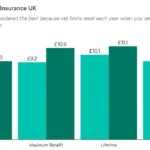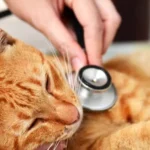Table of Contents
ToggleHow Do Pet Insurance Know About Pre-Existing Conditions –
Pet insurance is a type of insurance that helps pet owners cover the cost of medical care for their pets. However, just like any other type of insurance, pet insurance policies often have exclusions, limitations, and pre-existing condition clauses. A pre-existing condition is any health issue or injury your pet had before the policy’s effective date. These conditions are typically excluded from coverage under the policy, meaning that the insurance will not cover any medical care related to those conditions. Therefore, pet owners must understand how pet insurance companies identify pre-existing conditions and how they use this information to determine coverage. In this context, this article will explore how pet insurance companies in the UK identify pre-existing conditions and what steps pet owners can take to avoid issues with pre-existing conditions when purchasing pet insurance policies.
What are pre-existing conditions in pet insurance?
Pre-existing conditions refer to any health conditions or illnesses your pet has experienced or received treatment for before a pet insurance policy starts. This includes any chronic health issues, injuries, or other ailments your pet may have had before the policy was purchased.
Pet insurance companies often exclude coverage for pre-existing conditions, as they are considered a known risk before the policy was purchased. This means the insurance policy will not cover any expenses related to the pre-existing condition, including veterinary care, medications, and surgeries.
It’s important to note that different pet insurance companies may have slightly different definitions of pre-existing conditions, and some may have specific exclusions or limitations related to certain conditions. It’s always a good idea to carefully review the policy details and speak with a representative from the insurance company to fully understand any exclusions or limitations related to pre-existing conditions before purchasing a policy.
How do pet insurance companies define pre-existing conditions?
Pet insurance companies define pre-existing conditions as any health condition or illness that existed or was diagnosed before the start date of the pet insurance policy. This includes any health issues your pet has experienced or received treatment for, even if it was just a visit to the vet for a check-up.
For example, if your pet had an ear infection requiring medical treatment before you purchased a pet insurance policy, the ear infection would be considered a pre-existing condition. Similarly, if your pet has been diagnosed with a chronic illness, such as diabetes or cancer before you purchase pet insurance, it would be considered a pre-existing condition.
It is important to note that different pet insurance companies may have slightly different definitions of pre-existing conditions, and some may have specific exclusions or limitations related to certain conditions. Some companies may consider any condition that has shown clinical signs, required veterinary attention, or had diagnostic testing before the policy started as pre-existing.
It’s always a good idea to carefully review the policy details and speak with a representative from the insurance company to fully understand any exclusions or limitations related to pre-existing conditions before purchasing a policy. This can help you avoid unexpected expenses related to pre-existing conditions and ensure adequate coverage for your pet’s healthcare needs.
How do pet insurance companies identify pre-existing conditions?
Pet insurance companies use several methods to identify pre-existing conditions in pets. These methods are designed to help the insurer assess the risk of covering a pet with pre-existing conditions and determine the policy terms. Here are some of the ways that pet insurance companies identify pre-existing conditions:
- Medical history review: Pet insurance companies may review the pet’s medical records to identify pre-existing conditions. This can include any veterinary visits, diagnoses, and treatments the pet has received before the policy starts.
- Pre-policy vet check: Some pet insurance companies require a pre-policy vet check to identify pre-existing conditions. During the check-up, the vet may perform a physical exam, review the pet’s medical history, and conduct diagnostic tests to identify any health issues.
- Waiting periods: Many pet insurance policies have waiting periods, which are periods where certain conditions are excluded from coverage. Waiting periods can vary depending on the insurer but usually last a few weeks to a few months. This is designed to prevent people from purchasing a policy after their pet has been diagnosed with a pre-existing condition.
- Exclusion clauses: Some pet insurance companies may exclude certain conditions from coverage based on the pet’s medical history. This means the policy will not cover expenses related to the excluded condition.
It is important to note that pet insurance companies may have different policies when identifying pre-existing conditions. Some may have more extensive medical history reviews or longer waiting periods, while others may rely more heavily on pre-policy vet checks. It is always a good idea to carefully review the policy details and speak with a representative from the insurance company to fully understand how pre-existing conditions are identified and what the policy covers.
How do pet insurance companies use medical records to determine pre-existing conditions?
Pet insurance companies use medical records as one of the primary methods to determine pre-existing conditions in pets. Medical records contain important information about a pet’s health history, including previous illnesses, injuries, or treatments. By reviewing these records, the insurance company can identify any conditions before the policy start date and determine whether or not they will be covered.
Here is how pet insurance companies use medical records to determine pre-existing conditions:
- Reviewing veterinary records: Pet insurance companies will typically request copies of the pet’s veterinary records from the owner. These records include diagnosis codes, test results, and treatment plans. By reviewing these records, the insurer can identify any conditions before the policy was purchased.
- Examining medical histories: The insurer will explore the pet’s medical history for any previously diagnosed or treated conditions. This may include reviewing records from previous veterinarians or specialists, as well as any medications that the pet is currently taking.
- Identifying pre-existing conditions: If the insurer determines a condition before the policy start date, they will classify it as a pre-existing condition. This means that the condition will not be covered under the policy, and any expenses related to that condition will be the pet owner’s responsibility.
- Determining coverage: After reviewing the medical records, the insurer will decide what conditions will be covered under the policy. Some policies may exclude certain conditions entirely, while others may have waiting periods or limitations on coverage for pre-existing conditions.
It is important to note that not all pet insurance companies use medical records in the same way to determine pre-existing conditions. Some may have more stringent requirements for reviewing medical records or require a pre-policy vet check to confirm the pet’s health status. It is always a good idea to carefully review the policy details and speak with a representative from the insurance company to fully understand how pre-existing conditions are identified and what the policy covers.
Can pet insurance companies access my pet's medical records from previous veterinarians?
Pet insurance companies can access your pet’s medical records from previous veterinarians if they consent to do so. When you apply for pet insurance, the insurer may ask you to provide the pet’s medical history, including information about previous illnesses, injuries, and treatments. If the insurer needs additional information to determine whether your pet has any pre-existing conditions, they may request access to your pet’s medical records.
Here’s how pet insurance companies access your pet’s medical records from previous veterinarians:
- You provide consent: When applying for pet insurance, the insurer will typically ask permission to access your pet’s medical records. This consent may be given in writing or online through the insurer’s website.
- The insurer contacts the veterinary practice: Once you have consented, the insurer will get your pet’s previous veterinary practice to request copies of your pet’s medical records. This may include descriptions of earlier visits, test results, and treatment plans.
- The veterinary practice releases the records: If it has a policy of terminating them to third parties, it will release them to the insurer. In some cases, the veterinary practice may require a release form to be signed by the pet owner before releasing the records.
- The insurer reviews the records: Once they have obtained the medical records, they will review them to determine if your pet has any pre-existing conditions. This will help the insurer determine what conditions will be covered under your policy.
It’s important to note that pet insurance companies must follow strict guidelines when accessing and handling your pet’s medical records. They must comply with data protection laws and ensure that any personal information is kept confidential. In addition, they must obtain your consent before accessing your pet’s medical records, and they must only use the information to assess your pet’s insurance application.
How can I determine if my pet has a pre-existing condition before getting pet insurance?
Determining if your pet has a pre-existing condition before getting pet insurance can be tricky. Still, there are a few steps you can take to help identify any existing health issues.
- Take your pet to the veterinarian for a check-up: Before purchasing pet insurance, take your pet to the veterinarian for a thorough check-up. The veterinarian can examine your pet and detect any underlying health issues. They can also advise on how to manage existing conditions and prevent future health problems.
- Review your pet’s medical history: Review your pet’s medical history to identify any past illnesses or injuries. This information can help you determine if your pet has a pre-existing condition that may not be covered by pet insurance.
- Understand what pre-existing conditions are: Pre-existing conditions are health issues before your pet insurance policy starts. Some pet insurance companies may exclude coverage for pre-existing conditions or charge higher premiums for pets with pre-existing conditions. Understanding pre-existing conditions and how they may affect your pet insurance policy can help you determine if your pet has any existing health issues.
- Research pet insurance companies: Before purchasing pet insurance, research different pet insurance companies to understand their policies and coverage options. Some pet insurance companies may offer coverage for pre-existing conditions after a certain waiting period, while others may exclude coverage for certain conditions altogether. Understanding the policy terms and conditions can help determine if your pet’s pre-existing condition will be covered.
- Consider a medical history review: Some pet insurance companies offer medical history review services that can help you determine if your pet has any pre-existing conditions. The review may involve providing the pet’s medical history to the insurer, who will then analyze the information and determine if any pre-existing conditions exist.
What are my options if my pet has a pre-existing condition and is denied coverage by pet insurance?
If your pet has a pre-existing condition and is denied coverage by pet insurance, there are a few options available to you:
- Look for alternative pet insurance providers: Not all pet insurance providers have the same underwriting guidelines, so it may be worth shopping around for a provider covering your pet’s pre-existing condition. Remember that coverage may come at a higher cost or with certain limitations.
- Consider a pet health savings account: A pet health savings account (HSA) is an account you can contribute to regularly to cover future veterinary expenses. The funds in the account can be used for routine check-ups, emergency care, and treatment of pre-existing conditions.
- Create a budget for your pet’s healthcare expenses: You can create a budget specifically for your pet’s healthcare expenses, including the cost of treating their pre-existing condition. This can help you prepare financially for unexpected medical expenses.
- Explore financing options: Some veterinary clinics offer financing options that allow you to pay for your pet’s medical expenses over time. This can be a good option if you must cover the cost of a major medical procedure or ongoing treatment for a pre-existing condition.
- Consider self-insurance: Instead of paying for pet insurance, you can set aside a monthly amount to cover your pet’s healthcare expenses. This requires discipline and planning but can provide peace of mind knowing you have funds to cover your pet’s medical needs.
It’s important to note that not having pet insurance does come with certain risks. Unexpected medical expenses can quickly add up, and not being able to afford necessary medical care can put your pet’s health at risk. Therefore, it’s essential to consider all your options and choose a plan that works best for you and your pet’s needs.
Tips for avoiding issues with pre-existing conditions when getting pet insurance.
Here are some tips to avoid issues with pre-existing conditions when getting pet insurance:
- Enroll your pet when they are young: It’s important to enroll them in a pet insurance plan while they are still young and healthy. This helps avoid pre-existing conditions as they are less likely to develop significant medical issues.
- Research the policy thoroughly: Make sure you understand the policy’s coverage, exclusions, and limitations before signing up. Some policies may have specific restrictions on pre-existing conditions that can affect your pet’s coverage.
- Be honest about your pet’s medical history: When filling out your pet’s medical history, include any pre-existing conditions or previous injuries. Failure to disclose this information can result in denied claims and a loss of coverage.
- Consider a waiting period: Some pet insurance policies have a waiting period before coverage starts. During this time, any medical conditions that arise may be considered pre-existing. Be sure to understand the waiting period and how it applies to your pet’s coverage.
- Consider coverage for chronic conditions: If your pet has a chronic condition, finding a policy that covers ongoing treatment is important. Some policies may only cover acute conditions, which can leave you responsible for the cost of long-term treatment.
- Compare policies: It’s important to compare pet insurance policies to find the one that meets your pet’s needs and budget. Look for policies with comprehensive coverage, high annual limits, and low deductibles to ensure you get the best value for your money.
In conclusion, pet insurance companies in the UK use various methods to identify pre-existing conditions in pets, such as reviewing medical records, conducting medical examinations, and using underwriting guidelines. Pet owners must be honest and upfront about their pet’s medical history when applying for pet insurance. Pet owners should also read the policy’s terms and conditions carefully to understand what conditions are covered and what exclusions and limitations apply. Finally, suppose a pet owner’s pet has a pre-existing condition and is denied coverage. In that case, they should explore alternative options, such as setting up a savings account for pet care expenses or considering pet wellness plans. By being proactive and informed, pet owners can avoid issues with pre-existing conditions and provide their pets with the best possible care.















